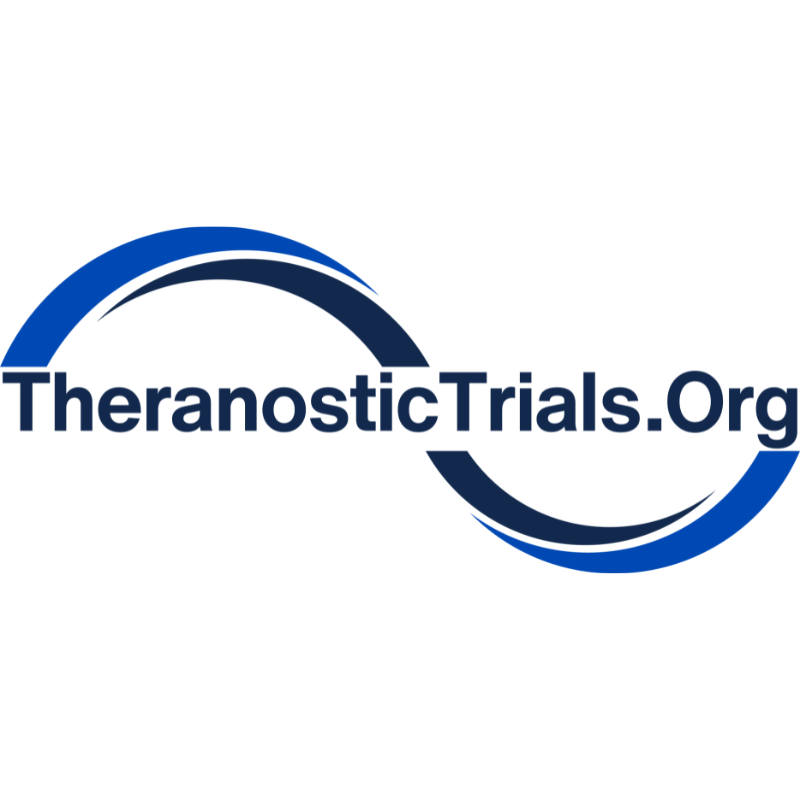- Theranostic Insights🧪
- Posts
- Theranostic Newsletter | 08.2025 Edition
Theranostic Newsletter | 08.2025 Edition
Information & Insights From The Experts
Here’s your latest dose of Theranostic Insights—a curated snapshot of what’s new and next in the world of theranostics powered by TheranosticTrials.org. From clinical breakthroughs to tech trends, we’ve got the highlights you need to stay ahead.
Latest Theranostic News 📰
From CAR-T to RLT: ARTBIO CEO Maps the Future of Alpha Radioligand Therapy
Following a $132 million Series B round, ARTBIO CEO Emanuele Ostuni, PhD, outlines a bold vision for transforming precision oncology with alpha radioligand therapies (ARTs). Drawing on experience from launching the first commercial CAR-T, Ostuni believes that ARTBIO’s use of short-lived alpha emitters, such as lead-212, offers a safer and more effective approach to targeted cancer treatment. The company’s integrated focus on R&D, clinical development, and a scalable supply chain positions it to be a major force in the theranostics space, as it challenges established players like Novartis and Bayer. ARTBIO’s commitment to innovation and real-world readiness marks a key inflection point for radioligand therapy in theranostic oncology.
Nationwide Study Confirms Survival Benefit of PSMA PET/CT in Prostate Cancer
A landmark study from Denmark has shown that men with biochemically recurrent prostate cancer who undergo PSMA PET/CT prior to salvage radiotherapy have significantly better overall survival than those who do not. Analyzing eight years of real-world, nationwide data, researchers found that early use of this advanced theranostic imaging technique leads to more targeted treatment decisions and improved long-term outcomes. These findings reinforce the clinical value of PSMA PET/CT in theranostics and support its broader adoption as a standard in prostate cancer care.
Asta Bio and Alpha Nuclide Partner to Advance 211-Astatine Theranostic Therapies in China
Asta Bio and Alpha Nuclide have announced a strategic collaboration to accelerate the development of 211-Astatine-based targeted alpha therapies for solid tumors. The partnership brings together Asta Bio’s Radiobody™ platform with Alpha Nuclide’s expertise in radionuclide production and supply chain logistics to fast-track preclinical studies and clinical trial readiness. This alliance highlights the growing momentum of theranostic innovation in China and underscores the importance of integrated radiopharmaceutical infrastructure for bringing novel theranostics to patients faster.
Continue reading here
Integrated Autoradiography-Histology Imaging Unlocks Microscale Theranostic Dosimetry
A new study introduces a robust imaging workflow that combines autoradiography with histological imaging to achieve microscale dosimetry in alpha-emitter radiopharmaceutical therapy (αRPT). This integrated method enables precise 3D activity localization and dose mapping in tissue, revealing highly heterogeneous radiation distribution at the near-cellular level—critical for optimizing theranostic treatment design. By overcoming long-standing challenges in image alignment and tissue preservation, this work marks a significant step forward in understanding αRPT radiobiology and improving the precision of theranostic applications.
Catalyst MedTech Launches Nuclear Medicine Tech Training Program
Catalyst MedTech has partnered with Westmoreland County Community College to launch a new training program addressing the national shortage of nuclear medicine technologists. The fully online curriculum allows students across the U.S. to enroll, with local clinical rotations and eligibility for national certification exams. This initiative strengthens the workforce critical to advancing theranostic applications and expands access through scholarship opportunities.
PSMA PET/CT Boosts Long-Term Survival in Recurrent Prostate Cancer
A new nationwide study from Denmark shows that prostate-specific membrane antigen (PSMA) PET/CT imaging before salvage radiotherapy (sRT) significantly improves long-term survival for men with recurrent prostate cancer. Patients who had PSMA PET/CT prior to treatment saw notably higher 1-, 2-, and 5-year survival rates and better biochemical recurrence-free survival, even though they had more advanced disease. These findings highlight the growing role of PSMA PET/CT in optimizing patient selection and outcomes in theranostic strategies for prostate cancer. Continue reading here.

FDA Accepts NDA for Enhanced Pylarify Formulation
The FDA has accepted Lantheus’ new drug application for an optimized formulation of Pylarify, a theranostic PET imaging agent used in prostate cancer. The updated version, developed by affiliate Aphelion, improves manufacturing efficiency by increasing batch size and radioactive concentration by up to 50%. These enhancements could expand patient access to Pylarify, especially in previously underserved areas, marking a significant advancement for theranostic imaging in oncology. The FDA decision is expected by March 6, 2026.
SERB Pharmaceuticals to Acquire Y-mAbs Therapeutics and DANYELZA
SERB Pharmaceuticals has announced a definitive agreement to acquire Y-mAbs Therapeutics for $412 million in an all-cash deal, significantly expanding its U.S. footprint and rare oncology portfolio. The acquisition includes DANYELZA, the first FDA-approved anti-GD2 therapy for relapsed or refractory high-risk neuroblastoma, a rare pediatric cancer. Y-mAbs’ theranostic pipeline also features a radiopharmaceutical platform targeting GD2 and CD38, underscoring SERB’s growing investment in theranostics for solid and circulating tumors. The transaction is expected to close by Q4 2025.
Baseline PSMA-PET Tumor Volume Predicts Benefit from Theranostic Combo in ENZA-p Trial
A new ENZA-p trial substudy shows that baseline PSMA total tumor volume (PSMA-TTV), measured via PSMA-PET, is both prognostic and predictive of overall survival in men with metastatic castration-resistant prostate cancer. Patients with low PSMA-TTV saw significantly greater survival benefits when [177Lu]Lu-PSMA-617 was added to enzalutamide compared to enzalutamide alone, underscoring PSMA-TTV’s role as a theranostic biomarker. By contrast, PSMA SUVmean showed no predictive or prognostic value. These findings advance the integration of PSMA-PET metrics into personalized theranostic treatment strategies.
